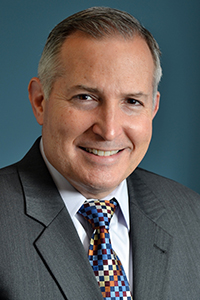Kindergarten Readiness Starts Prenatally

During the early years of life, a baby’s brain grows at its most rapid rate, doubling in size in the first year and nearly reaching its full size by age three. And if you think that is rapid growth, imagine that the brain gains a third of its size in the last five weeks of pregnancy!
This period of rapid development—both in terms of size and complexity—lays the foundation for children’s future success at school; it prepares them to read and write, form friendships, and discover their strengths.
Not all children have an equal chance to achieve healthy brain development though. There are large gaps in kindergarten readiness among children living in poverty whose families have less resources, and approximately six out of 10 children across the U.S. start kindergarten not ready to learn. Addressing those disparities means recognizing that, from the earliest moments of life, children’s health and development is entirely dependent on their families. It means seeking solutions that address the health and well-being of both caregiver and child, rather than looking at the two separately.
“Over the past decade, the public and clinical perception about early childhood, specifically birth to 3, has shifted,” says NICHQ President and CEO Scott D. Berns, MD, MPH, FAAP. “It’s been about more than realizing how important healthy early brain development is—it’s been about realizing what we can do to support that health. The shift towards health equity and population health has put a needed focus on two-generation approaches across the early childhood spectrum. NICHQ, our partners and fellow stakeholders are working on efforts across the country to put systems and services in place that better support children and families during those early years.”
These efforts have begun to build a bridge between the 0 to 3 health sector and prekindergarten education sector, breaking down siloes to support families so all children can achieve kindergarten readiness. According to Berns though, helping families get the support they need, when they need it, requires building another vital early childhood bridge.
Connecting to the prenatal space
“We need to start being more explicit that 0 to 3 really means prenatal to 3,” says Berns. “By focusing on children’s early health and development before they are born, those who provide prenatal care and education may identify developmental risk factors, like mom’s health, smoking, intimate partner violence and unhealthy weight. And by recognizing those risk factors before birth, providers can intervene early, connecting the family with the resources and services they need to support their health and the health of their child.”
Similarly, explains Berns, it’s vital to recognize and support early brain growth during prenatal care. Prenatal health professionals can talk with families about environments that foster early socioemotional development. They can discuss the effects of stress on a baby’s developing brain and encourage mothers to talk to their babies, beginning to bond and build the close relationship that will support future socioemotional growth.
“We need to remember that it’s the prenatal space, even earlier than the birth to 3 space, that helps give children the best start on kindergarten readiness,” says Berns.
Shifting this mindset by being more explicit can also help build critical bridges between the prenatal and birth to 3 communities.
“Children and families deserve a holistic continuum of care between pregnancy and pediatrics,” says Berns. “Reinforcing that bridge means ensuring that everyone in the prenatal and obstetric space—nurses and obstetricians working with pregnant and new mothers; neonatologists, physician assistants, and neonatal nurse practitioners; lactation consultants and dieticians; and mental health and social service workers, among others—is prepared to support the hand-off to pediatric care. If everyone is on the same page and involved in that hand-off, fewer families will fall through the cracks.”
Early conversations between families and their pediatric offices are also opportunities to discuss the social determinants of health, such as the family’s housing and cultural values, that will directly affect the child’s development. And those conversations set the stage for a strong and trusting relationship between the child’s pediatric care providers and the family.
Moreover, explains Berns, developing connections with the family’s pediatric office prenatally acknowledges that the child’s health is tied to the mother’s. And this lays the groundwork for pediatric visits to continue to support the health of both, such as by providing maternal depression screenings. When this happens, pediatric visits exemplify two-generation strategies that account for the entire context of a child’s health, including caregiver and family well-being.
“Recently, there have been more conversations about bringing the prenatal and birth to 3 communities together,” says Berns, “but we need to keep having these conversations, breaking down siloes and shifting perspectives. By making these connections even more apparent, we can improve continuity of care from prenatal to 3, which will most benefit vulnerable families and help address inequities in developmental health. This is one of the reasons our portfolio is situated in both spaces—we’re working with our partners across prenatal and birth to 3 to create and support that continuum. Building bridges across this space has the potential to encourage lifelong positive health outcomes for children.”
Find out more about how NICHQ’s working to improve prenatal to 3 health outcomes through initiatives like the National Network of Perinatal Quality Collaboratives, the Collaborative Improvement and Innovation Network to Reduce Infant Mortality, the New York State Maternal and Child Health Collaborative and NICHQ’s full birth-3 portfolio.
*****
As President and CEO of NICHQ, Berns provides strategic direction and leadership of a growing portfolio of initiatives aimed at driving change to improve children’s health. He serves as principal investigator on NICHQ-led multi-million dollar federal projects: the Early Childhood Comprehensive Systems Collaborative Improvement and Innovation Network and the National Action Partnership to Promote Safe Sleep Improvement and Innovation Network. Berns is a nationally recognized expert in quality improvement science in maternal and child health and has published extensively. He is passionate about the effect of prenatal care on a child’s early development, committed to building the bridge between early childhood health and education, and driven to achieve health equity and find solutions that support all families. Read his full bio.
